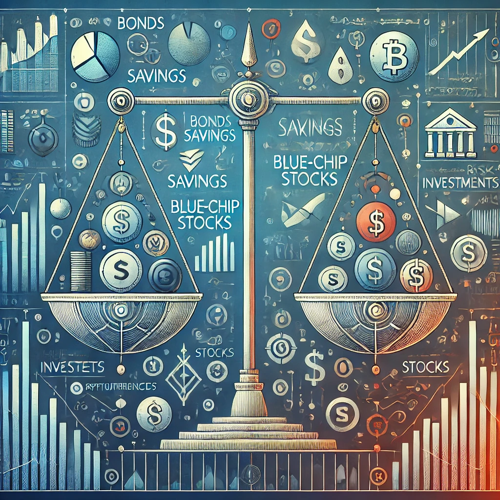What is Inflation? What Are Inflation Types? Forex Education. Learn Forex Trading.
What are Inflation Types? Inflation is the increase in the prices of goods and services in an economy over time. This increase leads to a decrease in the purchasing power of money. That is, fewer goods and services can be purchased with a certain amount of money. High inflation means an increase in the general cost of living, which has various effects on both individuals and businesses.
Inflation Types
Historical Perspective of Inflation
Inflation has manifested itself in different ways under many different periods and economic conditions in history. For example:
- Inflation in Ancient Times: In early history, the effects of inflation were limited because economies were mostly based on agriculture and trade was limited. However, during the Roman Empire, major wars and government expenditures caused the money supply to increase and therefore prices to rise.
- Medieval and Early Modern Period: In the Middle Ages, inflation was often caused by natural disasters or wars. Likewise, the large amount of gold brought to Europe from America in the 16th century devalued money and led to inflation.
- 20th Century and After: World wars and major economic crises led to severe forms of inflation. The hyperinflation of 1920s Germany in particular showed how destructive inflation can be. More recently, the stagflation of the 1970s represents a period of both high inflation and high unemployment.
Measuring Inflation
Accurately measuring inflation is critical to assessing the health of the economy. The main indicators used for measurement are:
- Consumer Price Index (CPI): Tracks changes in the prices of goods and services purchased by consumers. CPI is generally the most widely used index to determine the inflation rate. Price changes are monitored by considering a basket of goods and services.
- Producer Price Index (PPI): Measures changes in the prices paid by producers for goods and services. PPI shows cost pressures and price changes at the production stage.
- Food and Energy Price Index: Monitors changes in the prices of basic necessities such as food and energy. This index is used to assess the costs of basic needs rather than general price changes.
- Exchange Rate Indices: International trade and currency values are considered as part of inflation. Changes in the value of a country’s currency affect the cost of imports and exports.
Economic Effects of Inflation
The economic effects of inflation cover a wide range and can have both positive and negative consequences:
- Consumer Behaviour: High inflation can cause consumers to change their shopping habits. The continuous increase in prices may encourage people to spend rather than save.
- Investments and Businesses: Businesses may raise their prices in response to cost increases, but this may adversely affect demand. In addition, an uncertain economic environment may lead to a decrease in investments.
- Financial Planning and Savings: High inflation can erode the value of savings. People turn to alternative investment instruments in order to utilise their money in a way that will protect them from inflation.
- Income Distribution: Inflation can have a disproportionate impact on fixed-income individuals and low-income groups. If incomes do not increase in line with the rate of inflation, the purchasing power of these groups is reduced.
Managing Inflation
Central banks and governments use various policy instruments to manage and control inflation:
- Monetary Policy: Central banks can control the money supply by changing interest rates. Increasing interest rates may restrict the money supply and thus put pressure on inflation.
- Fiscal Policies: Governments can influence economic activity through public spending and taxation policies. Reducing expenditures and increasing taxes can reduce demand pressures.
- Regulations and Controls: Price controls and regulations can limit the prices of certain products. However, such measures usually offer short-term solutions and can cause market imbalances in the long run.
Is Forex Affected by Inflation? Inflation Types
Yes, the Forex market (foreign exchange market) is significantly affected by inflation. The impact of inflation on exchange rates is related to how the value of a country’s currency changes. The differences in value between currency pairs traded on the Forex market are heavily influenced by inflation as one of the economic indicators.
Definition and Importance of Inflation. Inflation Types
Inflation refers to the continuous increase in general price levels in an economy. It can also be thought of as a decrease in the purchasing power of a currency. This means that the prices of goods and services in the economy rise over time. In an environment of high inflation, costs for consumers and businesses increase, which can affect overall economic stability.
Forex Market and Exchange Rates. Inflation Types
The Forex market is a financial market where currencies from around the world are traded. Exchange rates indicate the value of one currency against other currencies. These rates are determined by the balance of supply and demand and are influenced by various economic, political and financial factors. Inflation, as one of these factors, has a significant impact on exchange rates.
Inflation Types
Effects of Inflation on Exchange Rates
1. Purchasing Power of the Currency
Inflation affects the purchasing power of a country’s currency. The currency of a country with high inflation rates may lose value relative to the currencies of other countries. This situation may cause a decline in the exchange rates of the country with high inflation rate.
2. Real Interest Rates and Monetary Policies
The relationship between inflation rates and interest rates has an indirect effect on exchange rates. Central banks can change interest rates to control inflation. In a high inflation environment, central banks usually raise interest rates. However, if interest rates do not sufficiently stabilise inflation, the real interest rate falls and this affects the investment decisions of international investors. Countries with high real interest rates generally become more attractive and this may lead to an appreciation of the currency of that country.
3. Capital Flows and Investor Behaviour
In countries with high inflation, investors generally tend to withdraw their capital from these countries. This may lead to significant changes in exchange rates. Investors may prefer to invest in countries with lower inflation rates. This can lead to changes in capital flows and fluctuations in exchange rates. For example, high inflation in Brazil may lead foreign investors to sell the Brazilian Real and switch to other currencies.
Inflation Types
Short-, Medium- and Long-Term Effects of Inflation and the Foreign Exchange Market
1. Short Term Impacts
The release of inflation data can often cause short-term movements in the foreign exchange market. For example, when a country’s inflation data comes out higher than expected, the currency of that country may depreciate. Such short-term effects often occur depending on the news flow and investor reactions. In the forex market, such sudden price movements are often triggered by speculative trades and algorithmic trading strategies.
2. Medium Term Effects
In the medium term, the effects of inflation on exchange rates may become more pronounced. In a high inflation environment, countries usually tighten their monetary policies. Such a policy change may lead to more permanent changes in exchange rates. Interest rate hikes by central banks may attract the interest of long-term investors, which may lead to a long-term strengthening of exchange rates.
3. Long-term effects
In the long term, the currency of a country with high inflation rates usually depreciates. Long-term economic trends and structural changes determine the general direction of exchange rates. High and persistent inflation can lead to economic imbalances and low growth rates, which can cause the value of the currency to fall. For example, hyperinflation in Zimbabwe led to the devaluation of the country’s currency in international markets.
Historical Examples
1. Hyperinflation in Germany (1920s)
The hyperinflation in Germany following World War I caused the Reichsmark, the country’s currency, to depreciate almost completely. In the 1920s, inflation rates in Germany were so high that the currency used in everyday life was almost reduced to pieces of paper. This period is a striking example of how extreme fluctuations in exchange rates and how fragile international economic relations can be.
2. Inflation Crises in Latin America
In the 1980s and 1990s, Latin American countries suffered from high inflation and hyperinflation. High inflation in countries such as Argentina, Brazil and Venezuela caused their currencies to depreciate in international markets. The inflation crises in these countries resulted in large fluctuations in exchange rates and economic instability.
3. Eurozone Debt Crisis (2010s)
The debt crisis in Europe in the 2010s led to high inflation and economic uncertainty in some countries. Crises in countries such as Greece, Spain and Portugal caused the euro to depreciate against other currencies. This period shows how economic imbalances in the Eurozone and the impact of the currency on international markets took shape.
Inflation and Strategies in the Forex Market
How can you benefit from inflation data in the forex market?
- Economic Calendar Tracking: Following the announcement dates of inflation data and expectations is an important step for transactions in the foreign exchange market. Inflation data announced through economic calendars can provide information about possible movements in exchange rates.
- Central Bank Policy Expectations: Having information about the inflation targets and monetary policies of central banks can help you predict changes in exchange rates. Central banks’ interest rate decisions and economic policies can have a significant impact on the foreign exchange market.
- Technical and Fundamental Analysis: By combining inflation data with technical analysis tools, you can make strategic decisions in the foreign exchange market. Technical analysis can help you predict possible exchange rate changes by analysing price movements.
- Risk Management: Sudden movements in the foreign exchange market due to inflation data can increase risks. Therefore, it is important to develop appropriate risk management strategies and keep your trading volumes under control.


